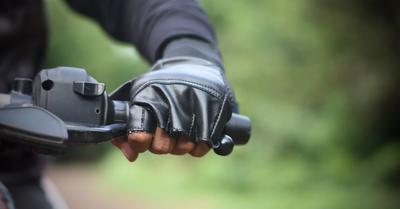Management Mistakes
The notorious years of the AMF (American Machine and Foundry) from 1969 to 1981 brought great damage to the reputation and overall quality of the Harley-Davidson brand. The brand was facing bankruptcy in the late sixties, and a company that specialized in bowling took over manufacturing. It turned out to be a colossal mistake. The next decade was characterized by low employee morale and strikes that left the supervision of quality up to unqualified and disinterested personnel. Costs were cut, production was streamlined, and quality control was abandoned. These were dark years for the once proud popular brand.
The remnants of this decade still have some residual effects when it comes to the oral tradition of Harley reliability. Perhaps it is difficult for some to move on from this misstep, but most H-D owners understand that the new management who purchased Harley-Davidson for $80 million in 1981 including a grandson of William Harley has turned this motorcycle company around.
Modification Mistakes
Whether it’s due to the expense of parts, the expense of the bike, high labor costs, or (as I am leaning towards) the innate culture of the Harley owner to want to tinker with their ride, this brand is known for its enthusiasts to modify their equipment. The word “chopper” comes from the wanna-be mechanic owners who “chop” their bikes upgrading them to make them faster, more powerful, more precise, and much more complex leading them to break down more if the mod wasn’t done perfectly. Adding more bling is one thing, but it takes a master mechanic to enhance some of the more intricate engine parts. And not all Harley owners are master mechanics. Unfortunately, that doesn’t stop them, and when an H-D bike breaks down, it’s usually the brand that takes the hit, not the amateurish mod-job done in the owner’s backyard.
Once again, chopping your bike by changing out the LEDs, bike seat, muffler, and mirrors are one thing, but diving deep into the V-Twin to upgrade your oiling system, flywheel, rods, pistons, cylinder heads, and valves can be tricky. Without the precision of expensive mechanic’s tools, you can botch your bike mod and end up making the brand look bad.
Maintenance Mistakes
Harley-Davidsons are known for cruising and heavy mileage. They can get well over 100,000 miles if properly maintained. The problem comes when maintenance is compromised. Sometimes an owner is busy, forgetful, or just doesn’t understand the importance of consistently maintaining their bike. This, also, can lead to the reputation of Harley’s breaking down often.
So inspect your bike regularly. Every year make sure you replace the air, oil, and fuel filters. Every week check the transmission, brake, and oil fluid levels. Check your tire treads often and know their mileage limits. Tighten the clutch cables and keep them well lubricated. Check the brake pads every 5,000 miles and the battery every other year. But most importantly, talk to your local, trusted Harley dealer about a maintenance schedule. Getting a second set of eyes on your two-wheeled investment can mean the difference between a quick tune-up and a heart-breaking “side-of-the-road” expensive breakdown. And not to be dramatic, but it can also mean the difference between life and death. When chugging down the highway at 70 MPH, do you really trust your expertise over a certified, highly-trained Harley-Davidson mechanic especially when it can compromise your safety on a machine that depends on precision instead of roller bars, bumpers, and crumple zones?
At least five visits to the dealer should take place before hitting the 20,000-mile mark. The first should take place at 1000 miles to make sure the bike is performing well early, and then every 5,000 miles to ensure there will be no long-term issues. Having your Harley checked out often by a professional is important, and just recently it is now easier to get your cycle maintained and fixed when under warranty. The Federal Trade Commission (FTC) has sued Harley-Davidson to allow more flexibility and options when taking your bike to individual, third-party parts, or service centers.
Manufacturing Mistakes
Without getting into the details of every H-D manufacturing mistake, it’s safe to say that there have been mechanical failures and recalls that if ignored, will lead to a reputation of Harleys breaking down more than other similar brands. Some are more serious than others, but knowing what years and models have problematic possible failures will keep your ride on the road.
Issues abound, as with every motorcycle, including faulty ABS (antilock brake systems) on 2008 – 2011 Touring, VRSC, and CVO Touring models, recent headlight assembly problems, and years ago recalling 238,000 motorcycles because of a clutch malfunction. Other problems include a chain tension issue in the cam, various oil leaks, and a brake fluid problem. Many more could be mentioned, but that’s not the point. All brands have problems. All brands have recalls. The real issue is when the owner doesn’t follow up with the recall. Knowledge is power. Knowing the years that have been found to be faulty in some areas will give the owner the ability to resolve it without the problem escalating.
Manufacturing of the Harley Davidson engine improved dramatically with the Evo Engine (1984) and only improved more with the V-Twin (1998) and the Screamin’ Eagle 131 (2009) and most recalls and manufacturing errors do not contribute to a reputation of a Harley breaking down. The engines are very reliable. Breakdowns occur with every brand, and Harleys rate above the Triumph, Ducati, BMW, and Can-AM for reliability. Harley-Davidsons are a premier, iconic brand with a very bright spotlight on it which could exaggerate any breakdown issues that people see.















